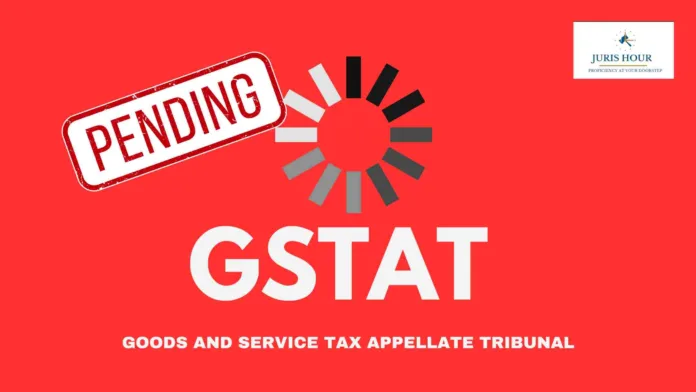As India marks the eighth anniversary of the landmark Goods and Services Tax (GST), stakeholders across industry and government are reflecting on both the gains achieved and the challenges that persist under the “one nation, one tax” regime. From simplifying tax slabs to plugging revenue leakages, experts say GST has fundamentally reshaped India’s indirect tax landscape—but they warn that without further reforms, its full promise may remain unfulfilled.
Reform Imperative: Towards “GST 2.0”
While GST replaced a complex web of 17 central and 13 state levies in 2017, multiple rate slabs (0%, 5%, 12%, 18%, and 28%) continue to draw criticism for undermining its simplicity. Industry leaders and tax experts are calling for a further rationalization of these rates—and for bringing petroleum products, electricity, and real estate under the GST umbrella—to achieve true “one rate for all.”
Rate Rationalisation: Long-Pending but Crucial
One of the most pressing demands from industry is the rationalisation of GST rate slabs, which currently create distortion and classification disputes across sectors. The current five-tier rate structure—originally designed to balance inflation concerns with revenue needs—has led to confusion, legal battles, and compliance hurdles.
The GST Council’s Fitment Committee has deliberated multiple times on merging the 12% and 18% slabs into a unified median rate. However, consensus has been elusive, largely due to concerns raised by states regarding revenue losses and inflationary impacts. A streamlined rate structure is expected to:
Improve tax certainty and compliance
Reduce litigation over classification
Facilitate easier audit and administration
Enhance the ease of doing business, especially for startups and MSMEs
Stakeholders are urging that the next phase of GST reform must decisively address this issue to realise the full potential of a destination-based consumption tax.
GST Appellate Tribunal: The Missing Link
One of the most persistent structural gaps in the GST framework remains the non-functional status of the GST Appellate Tribunal (GSTAT). Although enabling amendments have been made in law and notifications issued for the establishment of benches across various states, the actual constitution and operationalization of the Tribunal have seen repeated delays.
As a result, taxpayers continue to rely on High Courts to resolve routine GST disputes, leading to case pileups and judicial delays. Experts argue that the absence of GSTAT is denying taxpayers a dedicated, specialized appellate forum—one that was envisaged to reduce litigation costs and streamline adjudication. With thousands of appeals pending and no clear deadline for GSTAT’s rollout, legal uncertainty remains a major concern for businesses, especially in sectors with high-value tax claims.
Compliance Burden on MSMEs
Micro, small, and medium enterprises (MSMEs) bear the brunt of rigorous monthly filings, frequent technical glitches on the GST Network, and complex reverse‑charge obligations on services procured from unregistered suppliers. Trade associations have urged the government to restore the quarterly return filing option for smaller taxpayers and to enhance the GSTN’s stability during peak due dates.
Fraud, Disputes, and Demand Notices
Despite the rollout of e‑invoicing and AI‑driven analytics to detect bogus invoices, fake Input Tax Credit (ITC) claims remain a multi‑thousand‑crore issue. Mismatches between GSTR‑1 and GSTR‑3B filings often trigger automatic ITC reversals, imposing penalties on genuine taxpayers.
The power of arrest under Section 132 of the GST Act has also sparked debate, with businesses alleging instances of “tax terrorism” and demanding safeguards and clearer arrest guidelines.
Classification disputes—such as the long‑running debate over whether a paratha attracts a higher slab than a roti—continue to litter tribunals and consume judicial time, further stressing the need for clear, unambiguous HSN/SAC codification.
Loopholes Undermining Efficiency
Refund Delays for Exporters: Procedural bottlenecks in processing inverted duty structure refunds are tying up exporters’ working capital, even as global trade competition intensifies.
E‑Commerce TCS Complexities: Small sellers face revenue blockages when platforms deduct Tax Collected at Source, compounding cash‑flow challenges.
Blocked Input Credits: Companies in construction, capital‑goods and corporate social responsibility (CSR) sectors still find significant portions of their GST credits ineligible, eroding investment incentives.
Tangible Benefits Since 2017
Yet, notwithstanding these hurdles, GST Day is also a moment to celebrate clear achievements:
Unified Taxation: The abolition of multiple cascading levies has reduced logistic bottlenecks at state borders and slashed the overall tax burden on end consumers.
Enhanced Transparency: Digital invoicing, e‑way bills, and robust data‑triangulation have strengthened compliance monitoring and reduced under‑invoicing.
Formalisation of the Economy: Over 1.5 crore taxpayers now file returns under GST, reflecting a significant shift from cash‑driven transactions to documented trade.
Robust Revenues: Last month’s record ₹1.75 lakh crore GST collection underscored the enhanced fiscal health of both the Centre and the states.
Ease of Doing Business: Companies report lower transit times and faster clearances, contributing to India’s improved ranking in global logistics indices.
Looking Ahead
As policymakers chart the path for “GST 2.0,” consensus is emerging on the need for rate rationalisation, technological robustness, and expedited adjudication mechanisms. With the countdown to the next Budget underway, all eyes will be on whether fiscal architects seize this GST Day to address chronic loopholes like the long-pending GST Appellate Tribunal—and to build on the undeniable strides made over the past eight years.

